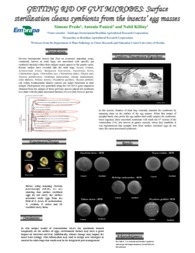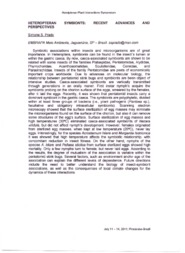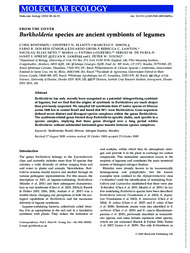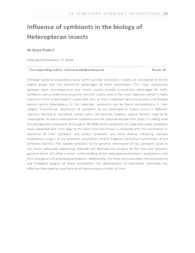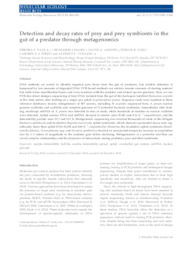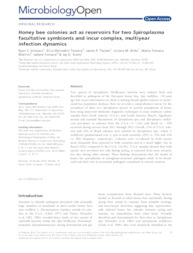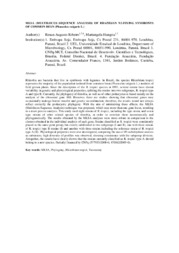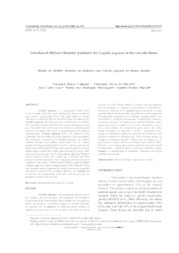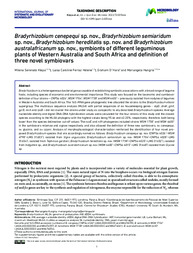Busca de Publicações
Filtrar por:
| Autoria: PRADO, S. de S.; PANIZZI, A. R.; KILLINY, N. Diverse heteropteran insects that feed on economic important crops, commonly known as stink bugs, are associated with specific gut symbiotic bacteria within their midgut cryptic spaces or the gastric... ... |
| |
| Autoria: BONTEMPS, C.; ELLIOTT, G. N.; SIMON, M. F.; REIS JUNIOR, F. B. dos; GROSS, E.; LAWTON, R. C.; ELIAS NETO, N.; LOUREIRO, M. de F.; FARIA, S. M. de; SPRENTE, J. I.; JAMES, E. K.; YOUNG, P. W. Burkholderia has only recently been recognized as a potential nitrogen-fixing symbiont of legumes, but we find that the origins of symbiosis in Burkholderia are much deeper than previously suspected.... ... |
| |
| Autoria: PAULA, D. P.; LINARD, B.; ANDOW, D. A.; SUJII, E. R.; PIRES, C. S. S.; VOGLER, A. P. DNA methods are useful to identify ingested prey items from the gut of predators, but reliable detection is hampered by low amounts of degraded DNA. PCR-based methods can retrieve minute amounts of st... ... |
| Autoria: SCHWARZ, R. S.; TEIXEIRA, E. W.; TAUBER, J. P.; BIRKE, J. M.; MARTINS, M. F.; FONSECA, I.; EVANS, J. D. Two species of Spiroplasma (Mollicutes) bacteria were isolated from and described as pathogens of the European honey bee, Apis mellifera, ?30 years ago but recent information on them is lacking despit... ... |
| Autoria: RIBEIRO, R. A.; HUNGRIA, M. Rhizobia are bacteria that live in symbiosis with legumes. In Brazil, the species Rhizobium tropici represents the majority of the population isolated from common bean (Phaseolus vulgaris L.) nodules... ... |
| Autoria: CALAZANS, G. M.; OLIVEIRA-PAIVA, C. A.; CRUZ, J. C.; MATRANGOLO, W. J. R.; MARRIEL, I. E. ABSTRACT: Cratylia argentea is a leguminous shrub native to the cerrado, which has great potential for forage production and recovery of degraded areas. This study aimed to isolate, characterize, and... ... |
| Autoria: KLEPA, M. S.; HELENE, L. C. F.; O´HARA, G.; HUNGRIA, M.
|
Observações
1 - Por padrão são exibidas publicações dos últimos 20 anos. Para encontrar publicações mais antigas, configure o filtro ano de publicação, colocando o ano a partir do qual você deseja encontrar publicações. O filtro está na coluna da esquerda na busca acima.
2 - Para ler algumas publicações da Embrapa (apenas as que estão em formato ePub), é necessário ter, no celular ou computador, um desses softwares gratuitos. Sistemas Android: Google Play Livros; IOS: iBooks; Windows e Linux: software Calibre.
Acesse outras publicações
Acesse a Base de Dados da Pesquisa Agropecuária (BDPA) para consultar o acervo completo das bibliotecas da Embrapa.

